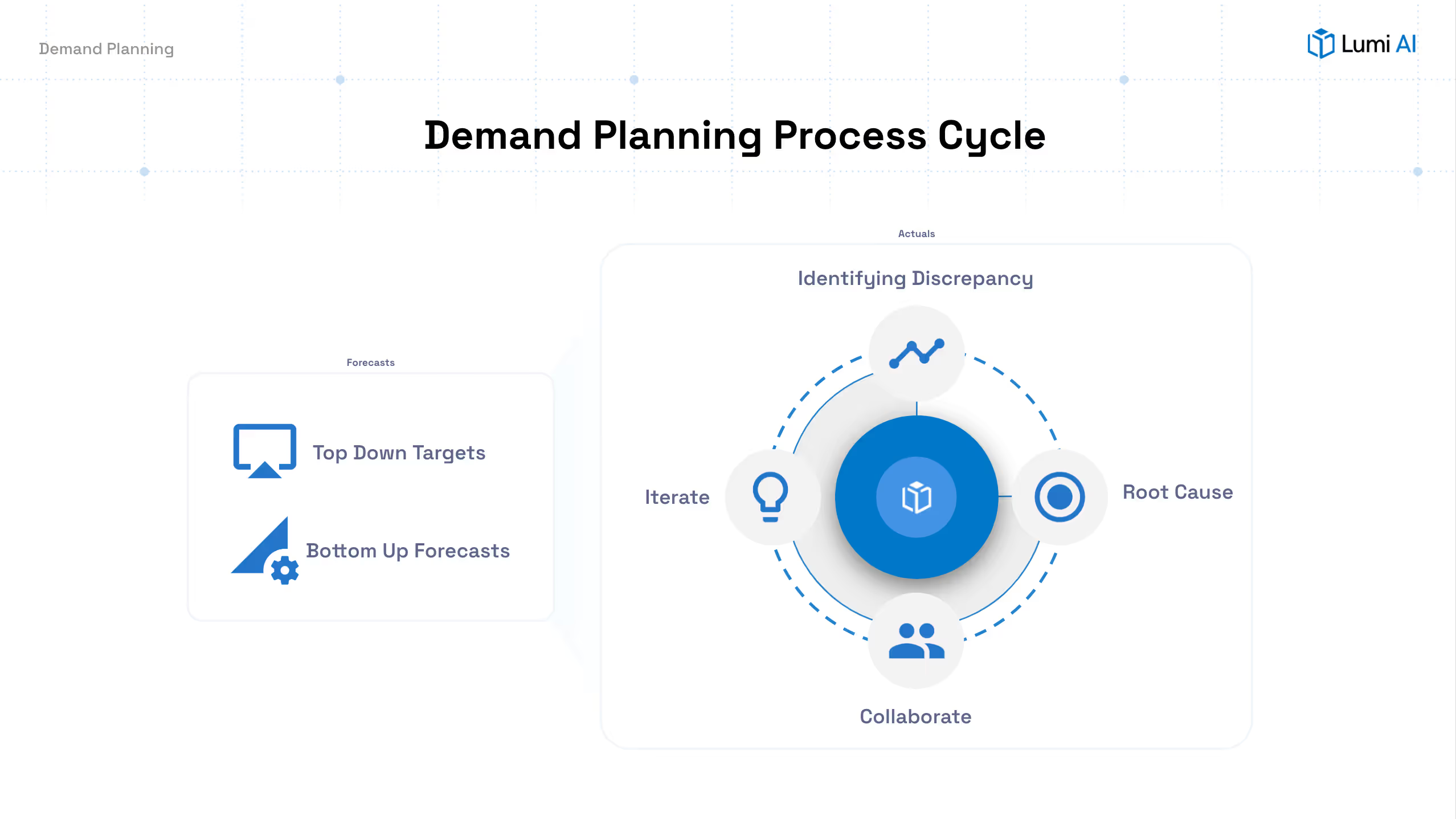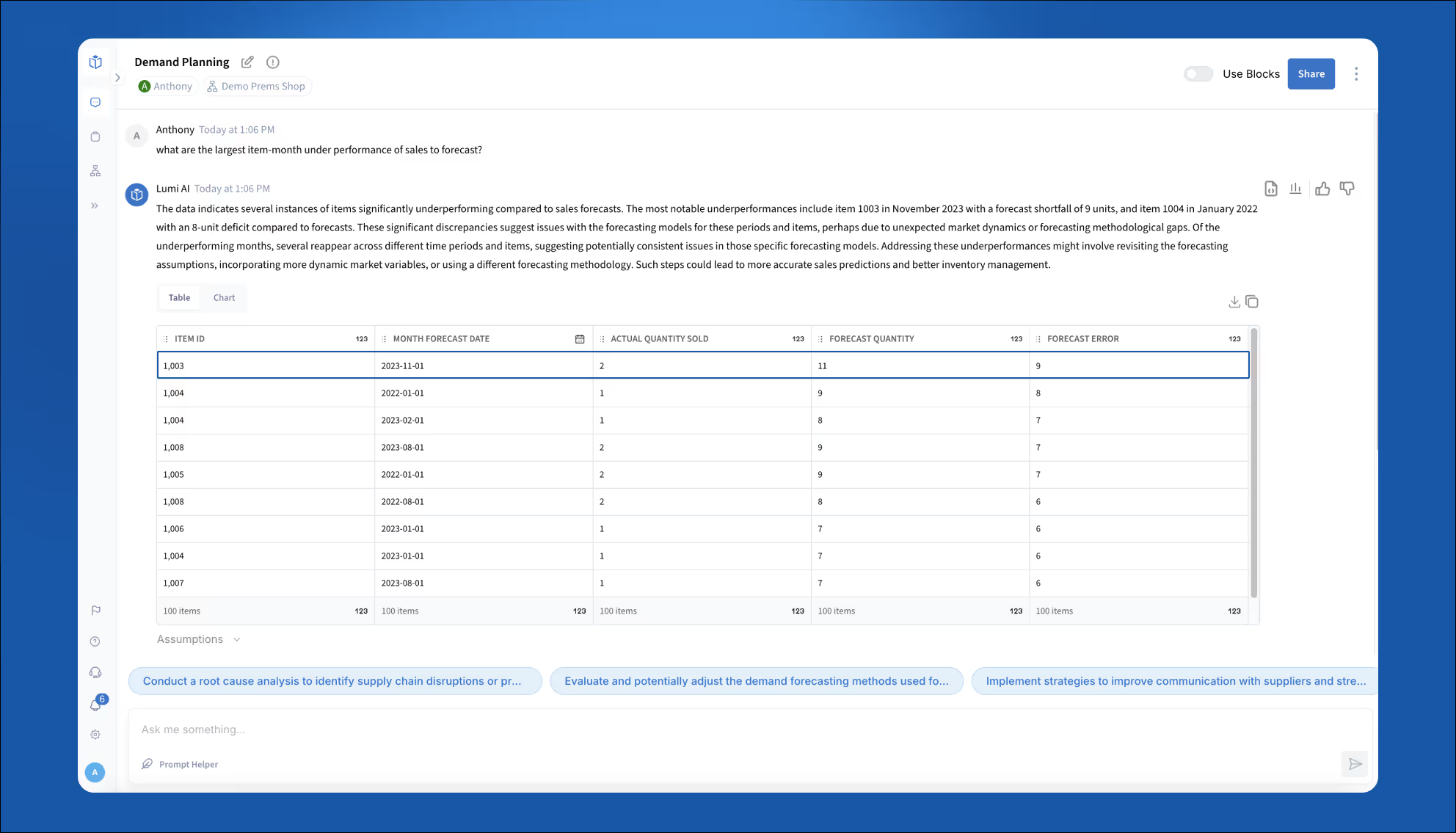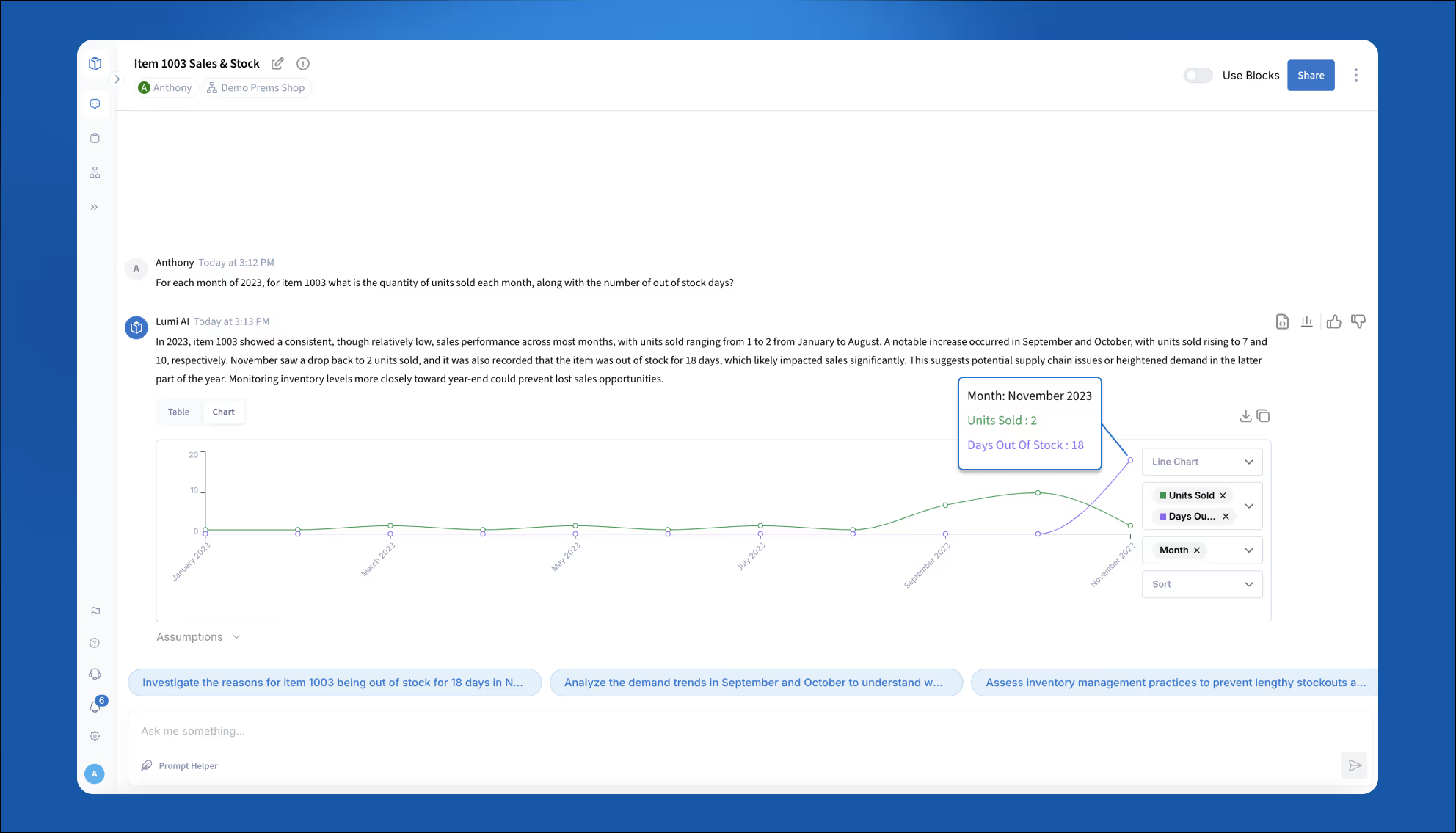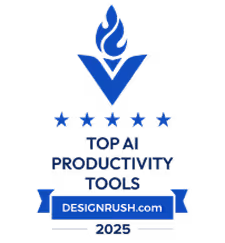Back to blog
Back to Case Studies
How to Identify Demand Forecasting Discrepancy for Demand Planning



What is Demand Planning?
Demand planning is the backbone of a well-functioning supply chain, helping businesses predict what, how much, and when customers will buy. By forecasting future demand, companies ensure the right products are available at the right time, avoiding overstocking, stockouts, and missed opportunities.
At its core, demand planning combines accurate forecasting with strategic alignment. By leveraging data such as sales history, market trends, and seasonal factors, demand planners ensure forecasts align with sales targets and analyze any variances that arise to improve future forecasts through a continuous improvement process.
In some organizations, forecasting and demand planning are handled by separate teams. Forecasting teams focus exclusively on generating data-driven predictions, while demand planners take those forecasts and embed them into actionable strategies through collaboration. This process often happens within the framework of Sales and Operations Planning (S&OP), where forecasts, business targets, and operational realities converge to create a unified plan.
When done effectively, demand planning delivers a supply chain that is efficient, customer-focused, and responsive to market changes, helping businesses reduce waste and improve overall performance.
Key Differences in Objectives: Supply Planning vs. Demand Planning

When comparing supply planning and demand planning, the differences lie in their focus and end goals.
- Demand Planning answers “What & When”. Demand planning revolves around anticipating future needs by analyzing market trends, historical sales data, and external factors. Its purpose is to provide accurate insights into what customers are likely to require, allowing businesses to prepare appropriately. Think of it as the "what and when" component of supply chain management.
- Supply Planning answers “How”. On the other hand, supply planning is all about execution. It takes the insights from demand planning and turns them into actionable strategies. This involves determining "how" to fulfill the anticipated demand while optimizing available resources like production capacity, inventory, and supplier capabilities. Supply planning doesn’t just react to forecasts—it aims to align operations with broader business objectives, whether that’s minimizing costs, ensuring rapid delivery, or balancing both.
Current State
The current landscape of demand planning is increasingly influenced by advancements in technology and data analytics. Organizations are moving towards more integrated approaches that leverage real-time data for better accuracy in demand forecasting.
Despite this progress, 75% of supply-chain functions still rely on spreadsheets. This reliance on outdated tools underscores the urgent need for modernization. While 90% of executives plan to implement new supply-chain planning solutions within the next five years, only 23% have started these upgrades.[1]
Demand Planning: Aligning Strategy, Forecasts, and Real-World Data
Reconciling bottom-up demand with top-down targets is a fundamental mandate of the demand planning process. This ensures that operational forecasts align with strategic goals, effectively balancing high-level objectives with real-world conditions. Addressing discrepancies in forecast accuracy remains a persistent challenge for demand planners, as they are frequently tasked with explaining and resolving gaps in predictions.
Upper management typically sets top-down targets based on strategic goals and market conditions, and demand planners investigate and reconcile any gaps between these targets and bottom-up forecasts.

- Top-Down Targets: Leadership defines high-level sales and revenue targets based on growth ambitions, market conditions, and strategic priorities. These targets provide direction for operational planning but need to be investigated and validated.
- Bottom-Up Forecast Generation: Demand planners create detailed forecasts using historical data, market trends, and inputs from cross-functional teams, including sales, marketing, and operations. These forecasts aim to reflect ground-level realities and ensure that operational constraints are considered.
- Identifying Discrepancies: Comparing top-down targets, bottom-up forecasts, and the actual data collected reveals misalignments or gaps, such as overambitious growth projections, insufficient inventory planning, or unaccounted market shifts.
- Investigating Root Causes: Planners work to understand the discrepancies between forecasted and actual outcomes. Analyzing historical trends, deviations, and anomalies helps planners pinpoint the root causes of discrepancies.
- Collaborative Reconciliation: Demand planners collaborate with leadership, marketing, sales, procurement, and operations to reconcile discrepancies, adjusting either the targets or the forecasts to achieve a realistic balance. Effective communication and collaboration are critical to ensuring alignment across all departments.
- Iterative Refinement: This process is ongoing, with planners revisiting forecasts and targets as new data becomes available to adapt to market dynamics.
Challenges in the Process
- Manual Data Collection and Analysis: Gathering accurate and comprehensive data from various sources is challenging. Inconsistent or incomplete data can lead to unreliable forecasts. This issue is compounded by the lack of access to meaningful and quality data, identified by 44.1% of respondents as the biggest obstacle to accurate forecasting. [2]
- Forecast Accuracy: Achieving precise demand forecasts is difficult due to factors like market volatility, changing consumer preferences, and unforeseen events. In fact, only 9% of survey participants expressed confidence in their company’s demand forecasting abilities.[2]
- Cross-Functional Collaboration: Demand planning requires input from multiple departments, including sales, marketing, finance, and operations. Ensuring effective communication and collaboration among these teams can be complex. 53% of companies plan to involve more cross-functional teams to enhance forecasting accuracy. [2]
Adoption of Advanced Technologies
Adopting advanced technologies is pivotal to overcoming these challenges. These technologies enable real-time decision-making, enhanced scenario-based modeling, and the integration of unconventional data sources, such as weather data and consumer sentiment, to provide more accurate forecasts.
Lumi AI
Lumi is a real time data insights platform that allows demand planners to explore data, create custom reports, and derive actionable insights. By bridging the technical skills gap, Lumi enables users to ask complex technical questions and extract valuable data insights without relying on technical intermediaries. This accessibility ensures faster decision-making and improved supply chain efficiency.
Demand planners use Lumi to:
Case Study
Using Lumi to Identify Demand Forecasting Discrepancy and Sales Underperformance
Objective: Identify item-months with significant underperformance relative to sales forecasts to improve demand planning accuracy and avoid future lost sales opportunities.
Prompt: What are the largest item-month underperformances of sales to forecast?

Outcome: Lumi AI generated a prioritized list of item-month combinations with the greatest positive forecast error (forecast quantity exceeding actual sales). The analysis revealed, for example, that Item 1003 in November 2023 had a forecast shortfall of 9 units (only 2 units were sold against an 11-unit forecast).
Next Steps: For Item 1003
- Investigate Inventory Availability: Analyze stock levels during the forecasted period to determine if inventory shortages contributed to the sales gap.
Second-Level Analysis: Root Cause of Underperformance
Objective: Uncover whether inventory availability contributed to Item 1003’s forecast varience in November 2023 by examining out-of-stock days and stock percentages.
Prompt: What is the reason for this underperformance for item 1003? Please check inventory issues.

Outcome: The analysis showed that Item 1003 was out of stock for 18 of 22 days in November 2023, resulting in an in-stock percentage of just 18.18%. The lack of available inventory likely led to the sales shortfall.
Additional Step: Time Series Trend Analysis
Objective: Assess patterns in both sales volume and stockouts across the year in time series format for spot any trends.
Prompt: For each month of 2023, for item 1003 what is the quantity of units sold each month, along with the number of out-of-stock days?

Outcome: Lumi visualized monthly sales alongside out-of-stock days. A notable demand increase occurred in September and October (7 and 10 units sold, respectively), followed by a sharp decline in November coinciding with high stockouts (18 days). This trend suggests potential missed opportunity due to poor inventory replenishment.
Next Step: Prevent Future Forecast Misses by:
- Improve Inventory Reliability: Ensure higher in-stock percentages for forecasted high-demand periods.
- Refine Forecast Models: Incorporate stock availability and time-series sales patterns into forecasts to improve accuracy.
- Establish Alerts for At-Risk Items: Flag high-forecast items with low stock coverage or recent demand surges as intervention points for planners and buyers.
- Monitor Trends Continuously: Use Lumi dashboards to track sales and stock trends throughout the year to anticipate and respond to seasonal demand shifts more effectively.
Key Insights and Recommendations
- Integrate Supply Constraints into Forecasting: Forecast accuracy must account for product availability. Planning systems should integrate real-time inventory data and trends.
- Align Cross-Functional Teams: Ensure that sales, operations, and procurement teams share visibility on forecasted demand and inventory risks to act proactively.
Discover how Lumi AI can streamline your demand planning processes with advanced AI-driven insights and automation. Book your demo today.
Sources

Make Better, Faster Decisions.

.avif)
.avif)






